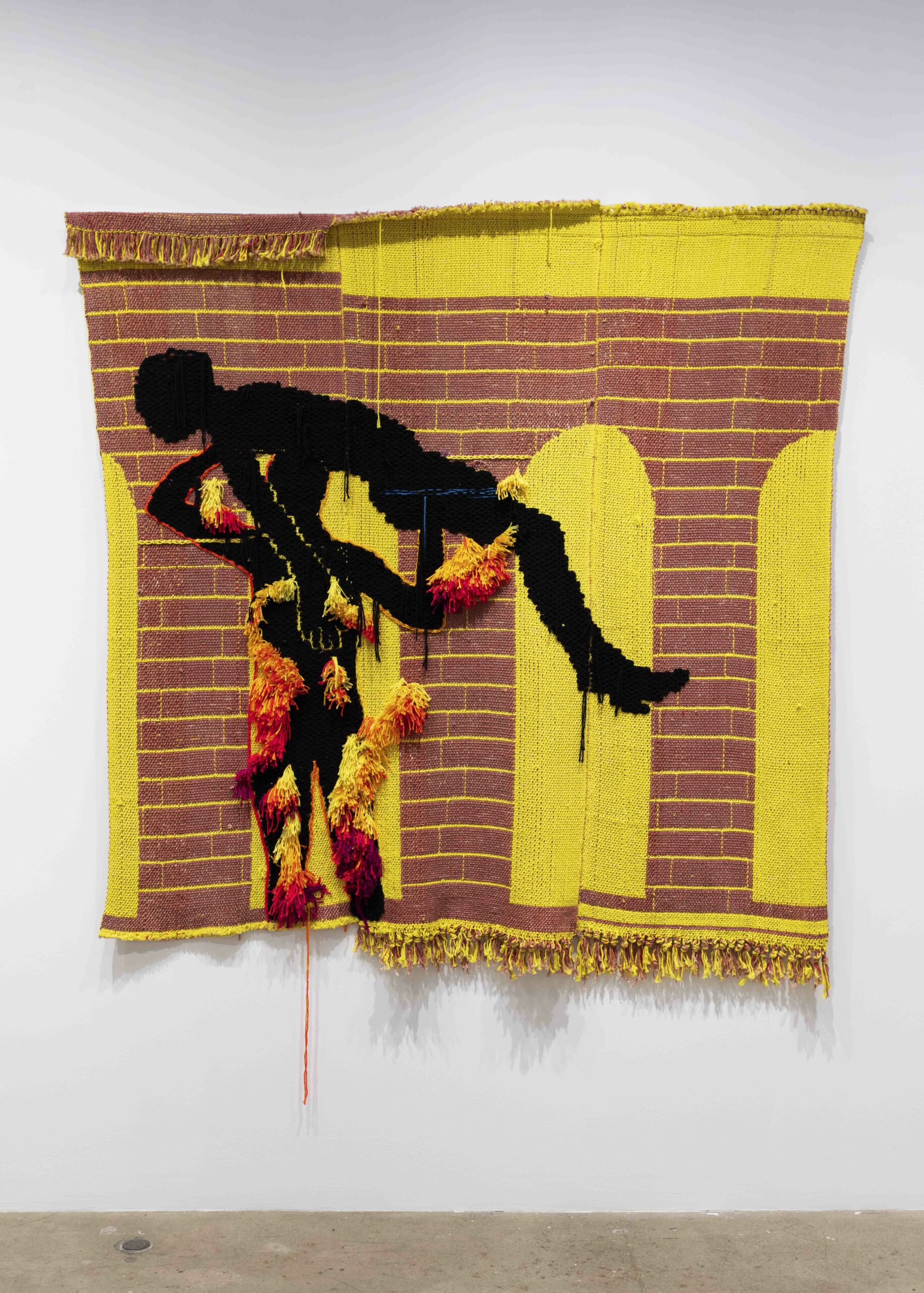
The Church in Sag Harbor will open an exhibition of contemporary art using fabric and fiber practices opening on June 30, with a reception from 6 to 8 p.m. Curated by Sara Cochran and Eric Fischl, the show features works by 44 international and local artists, including Magdalena Abakanowicz, El Anatsui, Tabitha Arnold, Louise Bourgeois, Diedrick Brakens, Margarita Cabrera, Nick Cave, Judy Chicago, Helena Hernmarck, Candace Hill-Montgomery, Alice Hope, Mike Kelley, Laurie Lambrecht, Dinh Q. Le, Daniel Lind-Ramos, Christa Maiwald, Charles McGill, Ernesto Neto, Maria Nepomuceno, Sheila Pepe, Erin M. Riley, Faith Ringgold, Toni Ross, Bastienne Schmidt, Alan Shields, Julianne Swartz and Hank Willis Thomas. The show runs through September 18
The exhibition includes a large-scale, site-specific work by Sheila Pepe, installed hanging from the building’s rafters, the first time an artist has worked specifically with the historic architecture of The Church building. The show was planned around four themes. The first focus explores the “Body and Its Distortions” and highlights a Soundsuit by Nick Cave, a vitrine by Louise Bourgeois, figurative tapestries by David Enrico, Christine Forrer and Erin Riley, a bonnet by Angela Ellsworth, sculptural works by Thomas Friedman, Charles LeDray, James Lee Byars and Liza Lou, as well as a monumental piece by Daniel Lind-Ramos.
The second theme is that of “Politics and Identity” that includes Margarita Cabrera’s potted desert plants made from border guard uniforms, Dink Q. Le’s interwoven photographic images of films about the Vietnam War and from the war itself, Charles McGill’s assemblages of golf bags that recall Guston’s paintings of the Ku Klux Klan, fabric pieces by Judy Chicago, Faith Ringgold and Hank Willis Thomas, a handkerchief by Ann Morton, tapestries by Tabitha Arnold and Diedrick Brakens, and sculptural installations by Christa Maiwald.
The third section explores the idea of “Webbing,” beginning with a brass spider’s web by Jim Hodges, a bottle cap tapestry by El Anatsui, a Coke tab work by Alice Hope, a bead and ceramic wall piece by Maria Nepomuceno, hanging pieces by Ernesto Neto and Julianne Swartz, a tapestry woven between a tree branch by Candace Hill-Montgomery, wall pieces by Toni Ross and Tomas Saraceno and a woven sculpture by Alan Saret.
The last part of the checklist explores “Stitching” and includes tapestries by Etel Adnan, Helena Hernmarck and Rosemarie Trockel, a printed piece using tapestries by Louise Eastman, cloth pieces by Bastienne Schmidt and Alan Shields, embroidery by Mark Olshansky, and an altered, appropriated tapestry by Lucy Winton.
The compelling works gathered for this exhibition question and blur the artificial boundaries between fine art and craft as well as between genres historically associated with feminine or masculine roles. By tapping into the rich historical vein of traditionally handmade crafts, contemporary artists have, in greater numbers, been adapting and utilizing techniques derived from tapestry, weaving, embroidery, beading, quilting and knitting that have profound effects on the meaning and aesthetics of their work. In counterpoint, craft practitioners have taken up the conceptual mantle of contemporary art to imbue their legacy materials with a new resonance. Artworks in this exhibition expand an aesthetic conversation into the realms of fashion, design, politics, race, gender identity and technology. From intimate scaled works to immersive site-specific installations, these works reinterpret the histories of art and fabric and add nuance to principles of contemporary art. Questions of the interplay between skill, technique and concept are at the center of this exhibition, challenging a cultural hierarchy that has traditionally privileged painting and sculpture and has valued certain skill sets while disregarding others.
The artists in the exhibition come from America, Africa, Europe and South America. They create work that is figurative and abstract, large, and small, sculptural, and architectural, as well as playful and serious.
“So much of how we think about or describe the aspects and conditions of our lives and our community use fabric, fiber, thread as metaphors to help us understand who we are and where we are,” said Eric Fischl. “It is our culture that weaves us together. We know that our beliefs and values can become tattered and worn. In moments of great stress, we might feel we are only holding on by a thread. What we have done or not been able to do forms the tapestry of our lives. The joys and struggles we experience touch the very fiber of our souls. Society, family and even our sense of self are all about building and maintaining a network of connectedness. These knots, these ties that bind, with all their care and complexity is at the heart of our exhibition, ‘Threading the Needle.’”
“This is going to be an opportunity for our visitors to see some work they may know in a new light and discover other artists who are dealing with the essential questions of our time,” chief curator Sara Cochran added. “The exhibition explores what happens when the conceptual approaches of art and the skills involved in fabric practices come together and produce artworks that challenge expectations in the arenas of art and craft, changing both fields. The work of these extraordinary artists is going to transform the building and surprise the public. There are going to be a lot of interesting and fun conversations this summer at The Church.”
The Church is at 48 Madison Street in Sag Harbor. For more information and full artist list, visit thechurchsagharbor.org.